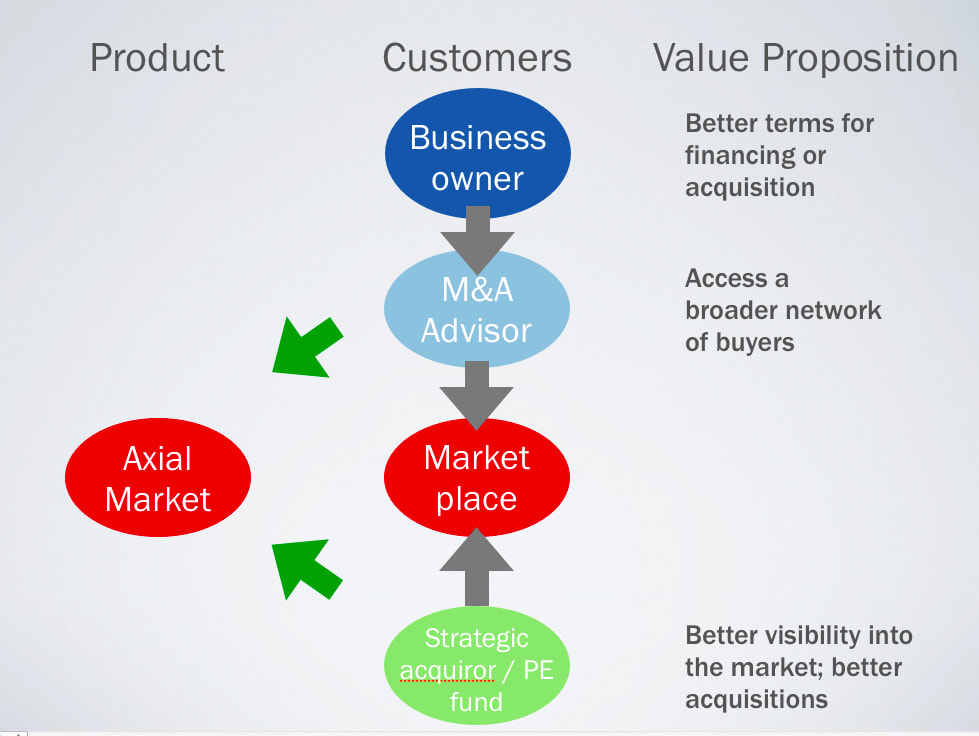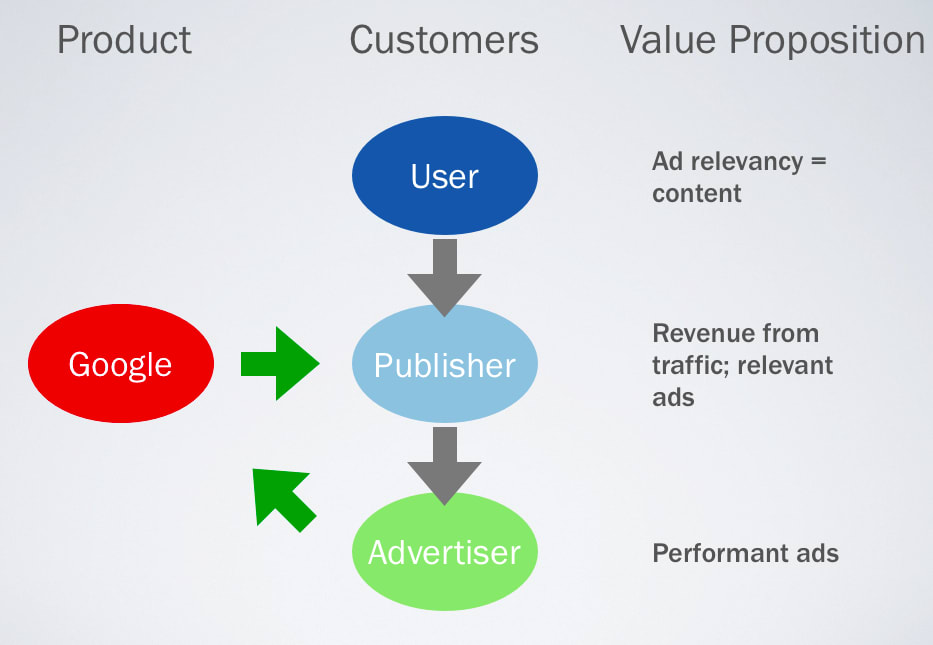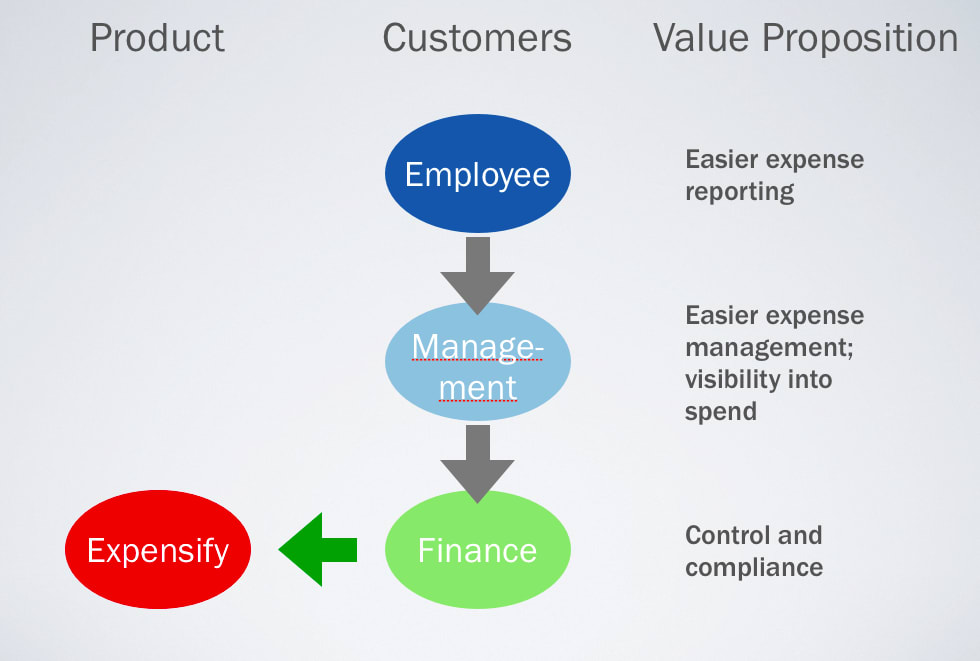Products aren’t sold in isolation - they exist within ecosystems. Great product market fit and sales pitches hinge on understanding and serving all the members of an ecosystem. Should a product fail to meet the needs of any one member, company success and sales velocity will falter.
One tool I use with portfolio companies is the Value Proposition Diagram (VPD) which shows why a product is compelling to every customer - and most products are sold to more than one customer at the same time.
I’ll walk through three examples of the VPD: Google AdSense, Expensify and Axial Market.
Google AdSense
A VPD has three columns: the product, the customers and the value proposition for each customer. Grey arrows represent product pull and green arrows signify revenue flows. One way to think of the VPD is a value chain analysis turned on its head.
Google’s AdSense enables publishers to run ads on their websites to generate revenue. Though publishers are the first to come to mind (and the immediate customer), they are the least important component of the ecosystem.
The user is the most important. This principle is Google’s first core value: focus on the user and all else will follow. To please the user, ads must be relevant and almost interchangeable with content. Ad relevancy benefits publishers too. Their websites feel disjointed when littered with banner ads of monkeys and hammers.
The advertiser follows the user in importance. Advertisers are the source of money in the ecosystem; they pay to make it work. Advertisers prize ROI and as Google proved relevancy drives ROI.
That’s the genius of AdSense: ad relevancy aligns the incentives of everyone in the ecosystem. This is the reason it’s such a great product and it sells itself. There is no opponent to the sale within the ecosystem.
Expensify
Expensify builds expense management systems for SMBs. Like Google, Expensify must serve three customers. But instead of three separate customers, Expensify sells to three internal customers: employees, managers and finance.
Expensify has adopted a bottoms-up strategy to win their market segment, so they target the end user who values ease of use. Expensify’s mobile app makes filing expense reports much easier than traditional systems. As employees use Expensify, they request approval of their expenses from their managers.
Expense management is a headache for managers who must remind their flock to file them on time. Once submitted, managers must approve expenses and reject those that violate policy. There is often much back and forth. Expensify smooths the friction in this process by telling users which expenses violate policy before submitting their reports, greatly reducing the overhead for managers.
Managers file department expense reports with finance. The finance team prizes compliance: ensuring accurate and correct expense reports. With better tools, employees and managers file more of their expenses.
Again, Expensify aligns the incentives of the stakeholders in the ecosystem which is the reason for their fast growth.
Axial Market

The last example is more of a market place model than the previous two. AxialMarket is a network for private company owners to access capital for growth or sale of their company from investors (private equity firms) or acquirors (larger companies). This market is quite opaque at the moment.
AxialMarket serves three types of customers: business owners looking to raise capital, M&A brokers/advisors who help business owners find capital, and the sources of capital, strategics and private equity firms.
Business owners are looking for the best deal in the market place - the best price for their company or capital at the lowest cost.
M&A advisors must find customers, convince them they are the best person for the job and then build a list of financiers and manage the fund raising process to success, ideally. The advisor’s Rolodex is their most valuable asset. The bigger their network, the more successful the advisor will be because they can generate auction pressure for their customers and obtain better prices.
AxialMarket offers advisors access to a broader group of investors, much larger than any could maintain individually. And advisors pay for access to this network.
On the other side of the market, financiers and acquirers search for the best companies to invest in or purchase. Better visibility coupled to tools that simplify the process are music to their ears. Axial’s network and toolset meets their needs.
Summary
As you build your product, refine your go-to-market strategy and hone your sales pitch, think through all the customers in an ecosystem that your startup must serve. Ideally, find a way to align their incentives. Knocking down sales friction is the first step to rapid growth. And the VPD is a simple tool for researching, articulating and validating your sales and product assumptions.

